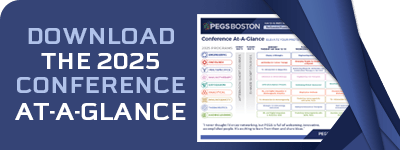Cambridge Healthtech Instituteの第20回年次
Difficult-to-Express Proteins
発現が困難なタンパク質
Mastering the Expression, Purification, and Production of Challenging Proteins
困難なタンパク質の発現、精製、生産のマスター
2025年5月12日 - 13日 EDT(米国東部標準時・夏時間)
Monday, May 12
7:00 amRegistration and Morning Coffee
EXPRESSION AND PRODUCTION OF CHALLENGING BIOTHERAPEUTICS
Optimizing the Assembly of an Asymmetric Antibody: Lessons Learned and Methods Implemented
 Sulo Baskaran, PhD, Senior Director, Protein Science, Santa Ana Bio
Sulo Baskaran, PhD, Senior Director, Protein Science, Santa Ana Bio
IgG-like asymmetric bispecific antibodies are one of the challenging biotherapeutics-and successful scalable production might demand engineering of both heavy and light chains to facilitate correct pairing. Multiple engineering possibilities have been developed to increase the quality, quantity, and stability of bispecifics. In this case study we will be presenting the challenges encountered and the analytical strategies implemented to check product quality during expression, purification and formulation.
Production and Characterization of AI-Engineered Proteins: From Antibodies to Soluble MPMP Proxies
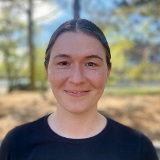 Allison Sheen, PhD, Senior Scientist, Nabla Bio Inc.
Allison Sheen, PhD, Senior Scientist, Nabla Bio Inc.
AI protein design strategies show promise for drug design-from de novo binder discovery to redesign of antibodies and antigens with improved properties. Even with best-in-class computational design, high-throughput laboratory methods are required to identify successful designs at scale. Here, we describe our experience producing and characterizing AI-designed proteins, including antibodies and solubilized multi-pass membrane protein proxies ("solMPMPs"), highlighting benefits, challenges, and the integration of computational and experimental methods.
Understanding the Biosynthesis of Polymeric IgM to Explore Its Structure as a Multivalent Binder Modality
 Haruki Hasegawa, PhD, Scientific Director, Discovery Protein Science, Amgen
Haruki Hasegawa, PhD, Scientific Director, Discovery Protein Science, Amgen
Polymeric IgMs are abundantly secreted from plasma cells despite their structural complexity and intricate polymerization steps. To gain insights into IgM’s assembly mechanics that underwrite high-level secretion, we characterized IgM’s biosynthetic process by testing a series of mutant subunits that differentially disrupt secretion, folding, and specific inter-chain disulfide bond formation. The findings demonstrate the crucial role of underlying non-covalent protein-protein interactions in orchestrating the initial subunit interactions and maintaining the polymeric IgM product integrity during ER quality control steps, secretory pathway trafficking, and secretion. Insights obtained from this study provide a foundation for designing IgM-like multivalent binders.
10:30 amNetworking Coffee Break
Greasing Protein Wheels: Unlocking Lipidation Strategies for Next-Generation Biomaterials and Therapeutics
 Davoud Mozhdehi, PhD, Associate Professor, Chemistry, Syracuse University
Davoud Mozhdehi, PhD, Associate Professor, Chemistry, Syracuse University
Protein lipidation remains a largely untapped resource in therapeutic development, despite its prevalence regulating cell biology. Traditional semi-synthetic methods for protein lipidation often suffer from low yields, harsh reaction conditions, and can induce protein misfolding, complicating purification processes and limiting therapeutic potential. Our work addresses these challenges by genetically engineering prokaryotes to rapidly produce diverse libraries of lipidated proteins, enabling systematic investigation of lipid-driven protein behavior.
Developing mRNA Therapeutics for Cardiovascular Diseases
 Ajit Magadum, PhD, Assistant Professor, Center for Regenerative Medicine, Department of Internal Medicine, Heart Institute, University of South Florida
Ajit Magadum, PhD, Assistant Professor, Center for Regenerative Medicine, Department of Internal Medicine, Heart Institute, University of South Florida
mRNA therapeutics is rapidly emerging as a groundbreaking strategy for treating cardiovascular diseases (CVD), which affect 650 million people. Despite advances in medicine, the need for curative therapies remains urgent. I will share our decade of work on mRNA therapies that promote cardiac regeneration-and combat fibrosis, cell death, and hypertrophy in CVD animal models. Additionally, we introduce novel cell-specific mRNA expression platforms, advancing the field of CVD therapeutics.
12:00 pmSession Break
1:10 pmSession Break
EXPLORING PROTEIN ENGINEERING STRATEGIES
A Genetic Encoding for Glycans: Platform Agnostic and Site-Specific Glycan Design, Selection, and Homogenization
 Benjamin Kellman, PhD, Research Fellow, Pathology, Ragon Institute of MGH MIT & Harvard
Benjamin Kellman, PhD, Research Fellow, Pathology, Ragon Institute of MGH MIT & Harvard
Unlike other biopolymers, central dogma describes glycosylation as non-template biosynthesis. Without a genetic encoding, glycan impact on biology is opaque. Here, we challenge template-free glycosylation and describe protein-encoded rules for glycan biosynthesis. We quantified glycan-protein associations and used these associations to predict glycosylation in HIV, SARS-CoV-2, and multiple immunoglobulins. Next, we reformulated these associations as an engineering strategy, leveraging many amino acid substitutions that minimally change protein structure but significantly impact glycosylation. With this genetic encoding for glycans, we can integrate the siloed practices of glycan and protein engineering into a unified process of glycoprotein engineering.
Overcoming Expression Challenges to Antigen Engineering through Iterative in silico Design with Limited in vitro Screening
 Athéna Patterson-Orazem, PhD, Senior Scientist II, RNAimmune Inc.
Athéna Patterson-Orazem, PhD, Senior Scientist II, RNAimmune Inc.
We applied AI-assisted, iterative in silico approaches to stabilize RSV and influenza antigens for mRNA vaccines. Abrogated protein expression and secretion in early design rounds motivated adaptations to in silico design methodology. Within two iterations and twenty variants, four sets of unique mutations demonstrated RSV expression and stability enhancement comparable to established stabilizing mutations. Similar success with influenza B optimization supports broader applicability of iterative in silico design methods to streamline antigen engineering.
KEYNOTE PRESENTATION: Introns: From Nature to Design
 Kart Tomberg, PhD, Co-Founder & CEO, ExpressionEdits Ltd.
Kart Tomberg, PhD, Co-Founder & CEO, ExpressionEdits Ltd.
If you compare a typical human gene to the transgenes used to manufacture proteins, they have markedly different structures despite both being foundational to the biotechnology industry. At ExpressionEdits, we have revised the paradigm for how a mammalian transgene should look by reintroducing introns back into the cDNA sequence. We have trained an AI model of "genetic syntax" to learn how to combine coding and non-coding DNA to improve protein expression.
 GPEx® Lightning Technology: Overcoming Challenges to Deliver Difficult to Express Proteins
GPEx® Lightning Technology: Overcoming Challenges to Deliver Difficult to Express ProteinsRachel Kravitz, Principal Scientist, R&D, Catalent Pharma Solutions
The GPEx® Lightning platform accelerates high-titer production of next-generation multi-specific antibodies and complex protein biologics with unmatched speed, flexibility, and scalability. Utilizing over 100 dock sites for stable integration, Catalent’s GPEX® Lightning technology achieves unique genetic tunability ensuring balanced expression of complex and hard-to-express proteins. This presentation will provide case studies leveraging GPEx® Lightning’s flexibility to deliver complex molecules such as multi-chain bi-specifics, virus-like particles, and unusual fusion protein combinations.
3:20 pmNetworking Refreshment Break
4:05 pmTransition to Plenary Keynote Session
PLENARY KEYNOTE SESSION
The Role of Protein Engineering in Developing New Innovative Modalities
 Puja Sapra, PhD, Senior Vice President, Head R&D Biologics, Engineering and Oncology Targeted Discovery, AstraZeneca
Puja Sapra, PhD, Senior Vice President, Head R&D Biologics, Engineering and Oncology Targeted Discovery, AstraZeneca
Advances in protein engineering technologies have revolutionized biologics design, paving the way for new innovative drug modalities. This talk will highlight key advancements in the field of protein engineering that have enabled these new modalities to enter the clinic and provide benefit to patients. The talk will also explore the impact of machine learning-enabled deep screening technology on hit identification, lead optimization and development of antibody-based therapies.
YOUNG SCIENTIST KEYNOTE
Antibody-Lectin Chimeras for Glyco-Immune Checkpoint Blockade
 Jessica C. Stark, PhD, Underwood-Prescott Career Development Professor, MIT
Jessica C. Stark, PhD, Underwood-Prescott Career Development Professor, MIT
Despite the curative potential of cancer immunotherapy, most patients do not benefit from treatment. Glyco-immune checkpoints-interactions of cancer glycans with inhibitory glycan-binding receptors called lectins-have emerged as prominent mechanisms of resistance to existing immunotherapies. I will describe development of antibody-lectin chimeras: a biologic framework for glyco-immune checkpoint blockade that is now moving toward the clinic.
5:55 pmWelcome Reception in the Exhibit Hall with Poster Viewing
-jpg_763e004d-1a72-4a71-8e72-41737f8bc448.jpg)
7:20 pmClose of Day
Tuesday, May 13
7:30 amRegistration and Morning Coffee
MENTORING MEET-UP
Creating and Fostering a Productive and Effective Mentor-Mentee Relationship
This meet-up is designed for senior scientists that are interested in becoming a mentor for junior scientists: IN-PERSON ONLY
- What it takes to be a mentor
- Finding the right match
- Goal of Mentoring is to provide support for professional career development and informal coaching
- The Mentor:Mentee relationship: you get out of it what you put into it.
- Establishing boundaries and clear action items to make the most of the experience.
TOOLS AND PROTOCOLS FOR IMPROVING FUNCTIONAL PROTEIN PRODUCTION
Unprecedented GPCR Expression for Conformational Dynamics Study of GPCR Using 19F-NMR
 Libin Ye, PhD, Associate Professor, Molecular Biosciences, University of South Florida
Libin Ye, PhD, Associate Professor, Molecular Biosciences, University of South Florida
Despite minimal sample preparation of cryo-EM results in thousands of GPCR structures resolved, we still face challenges to conduct conformational transitions and dynamics study using 19F-qNMR, a super tool in quantifying conformational states because of its ultra-sensitivity to the microenvironmental changes compared to other nuclei. To address this, my lab developed two protocols driving the field forward, allowing us to produce 5-10 mg. of functional receptors/1L cell culture.
High-Throughput Protein Expression Screening and Production of Cell-Surface Protein Ectodomains
 Rob Meijers, PhD, Head, Biological Discovery, Institute for Protein Innovation
Rob Meijers, PhD, Head, Biological Discovery, Institute for Protein Innovation
Cell-surface receptors pose challenges in expression and purification due to low levels, misfolding, and instability. We introduce a high-throughput ELISA fluorescence approach to rapidly assess multiple recombinant constructs. Utilizing small-scale expression, enzymatic biotinylation, and C-terminal His-tag capture, this approach efficiently prioritizes constructs for large-scale production. We also tested several codon optimization schemes using a minimally designed expression vector. Testing truncation constructs across various protein families demonstrated its effectiveness, significantly saving time in identifying optimal candidates for downstream applications
Capabilities of KIWI-Biolab’s Robotic Ecosystem for Process Development and Optimization of Difficult-to-Express Proteins
 Peter Neubauer, PhD, Lab Head, Bioprocess Engineering, TU Berlin
Peter Neubauer, PhD, Lab Head, Bioprocess Engineering, TU Berlin
Based on fully-automated, well-controlled, parallel fed-batch cultivations with integrated analytics and model-based DoEs/Machine learning, the KIWI biolab allows a fast selection of best clones and optimization of process parameters in a single experiment. The power of the established self-driven lab is demonstrated with difficult-to-express protein processes, including hydrogenase, Fabs and elastin like proteins.
 Innovative Cell Line Development Approaches for the Next Generation of mAb Formats and Non-Antibody Products
Innovative Cell Line Development Approaches for the Next Generation of mAb Formats and Non-Antibody Products
 Lena Tholen, Director, Cell Line & Bioprocess Development, FyoniBio
Lena Tholen, Director, Cell Line & Bioprocess Development, FyoniBio
We will illustrate the relevance of host cell selection in early development with its effect on product quality and process feasibility. We will show how seamless and full-blown CLD approaches can impact final results in complex antibody format production. Finally, case studies for complex bispecific antibody project developed in FyoniBio’s CHOnamite and difficult-to-express protein in human GlycoExpress cells will be presented.
10:35 amCoffee Break in the Exhibit Hall with Poster Viewing

EZ Tag: A New Solution for Difficult-to-Express Proteins
 Sangyong Jon, PhD, Professor, Biological Sciences, KAIST
Sangyong Jon, PhD, Professor, Biological Sciences, KAIST
In this talk, I will share with the audience a new protein tag, designated EZ-tag, as a solution for difficult-to-expression proteins. Our EZ-tag platform is based on the unique behavior of an endogenous calcium-storage protein in cells. Our EZ-tag demonstrates notable increase in the expression and solubility of various recombinant proteins compared with other conventional protein tags. Moreover, the fusion protein can be facilely purified using a simple calcium-ion-mediated precipitation method. Our EZ-tag will benefit researchers in related industry and academia who are seeking an efficient protein tag for expression and purification of difficult-to-express proteins of interest.
Bioproduction Platform to Generate Functionalized Disulfide-Constrained Peptide Analogues
 Sunhee Hwang, PhD, Scientist 4, Peptide Therapeutics, Genentech Inc.
Sunhee Hwang, PhD, Scientist 4, Peptide Therapeutics, Genentech Inc.
A versatile and highly-efficient bioproduction platform to generate various forms of disulfide-constrained peptides (DCPs) has been developed as an environmentally sustainable alternative to SPPS. This platform can be used to generate: (1) multivalent DCPs with different geometries, (2) DCPs with functional chemical groups such as biotin, (3) DCPs with unnatural amino acids through amber codon suppression, and (4) isotope-labeled DCPs.
12:45 pmSession Break
1:50 pmClose of Difficult-to-Express Proteins Conference
* 不測の事態により、事前の予告なしにプログラムが変更される場合があります。
アジェンダ・講演者・スポンサー更新
2025年 プログラム
表示する:

工学ストリーム

腫瘍ストリーム

多重特異性ストリーム

免疫療法ストリーム

発現ストリーム

分析法ストリーム

免疫原性ストリーム

新興治療ストリーム

機械学習ストリーム
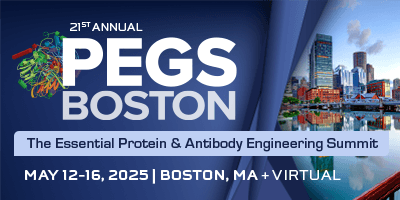
 Application of BacMam in Difficult Protein Expression and Purification
Application of BacMam in Difficult Protein Expression and Purification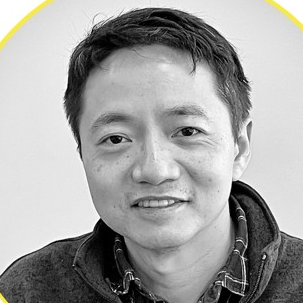
 Talk Title to be Announced
Talk Title to be Announced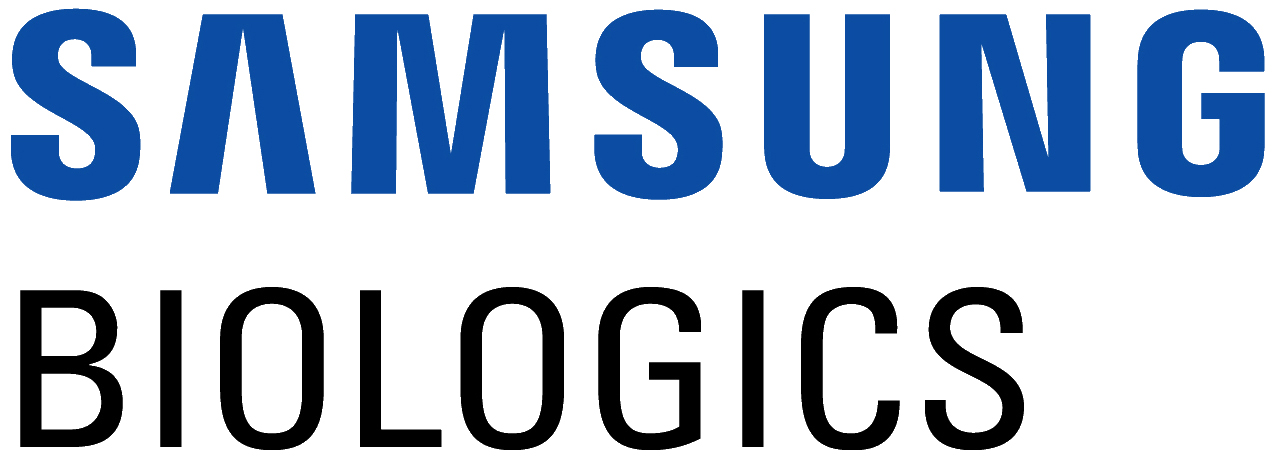 Talk Title to be Announced
Talk Title to be Announced




 Talk Title to be Announced
Talk Title to be Announced Talk Title to be Announced
Talk Title to be Announced Talk Title to be Announced
Talk Title to be Announced



